Why skimping on testing could land you in a legal and financial nightmare.
“We just had a risk assessment last year. Do we really need another one already?”
If this question sounds familiar, you’re not alone. Across the UK, facility managers, building owners, and reluctant health and safety officers are all wondering the same thing. After all, if nothing’s changed, why bother with the expense and disruption?
Let me stop you right there. That thinking is exactly how small problems become headline-making disasters.
At HCS Water Treatment, we’ve seen it all – from the diligent businesses who treat their water systems like a beloved vintage car (regular check-ups, prompt maintenance, detailed records) to the “fingers-crossed” brigade who approach water safety with all the forethought of someone buying milk the day before it expires.
“What’s the Worst That Could Happen?” (Spoiler: A Lot)
Picture this: Your last risk assessment was 18 months ago. Everything looked fine. Since then, you’ve had some staff changes, a small office renovation and that weird gurgling sound from the basement pipes that everyone ignores. Surely nothing to worry about, right?
Wrong. In the Legionella world, 18 months might as well be 18 years. In that time:
- Water usage patterns have changed (especially with hybrid working models)
- That “minor” renovation could have created new dead legs in your pipework
- The new cleaning contractor isn’t flushing those rarely-used showers in the executive bathroom
- The temperature controls have slowly drifted out of the safe zone
- That gurgling? It’s biofilm building up, creating a five-star resort for bacteria
Meanwhile, you’re sitting there with outdated paperwork that won’t protect you when the HSE comes knocking after someone falls ill.
The Legal Tightrope You’re Walking
Here’s the uncomfortable truth: ignorance isn’t bliss when it comes to water safety, it’s negligence.
The Health and Safety at Work Act 1974 doesn’t care that you’re busy. The Control of Substances Hazardous to Health Regulations 2002 won’t accept “but we did a test ages ago” as a valid defence. And ACoP L8? That’s practically screaming at you to stay on top of your risk assessments.
When (not if) something goes wrong, these regulations don’t just suggest consequences, they guarantee them. We’re talking:
- Unlimited fines (yes, unlimited – no ceiling)
- Criminal prosecutions that can lead to imprisonment
- Civil claims from affected individuals that can bankrupt a business
- Disqualification from being a company director (there goes the career)
All because someone thought annual risk assessments were “a bit much.”
Real Talk: How Often is Actually Necessary?
Let’s cut to the chase. How often should you be conducting risk assessments? The official guidance is delightfully vague: “regularly” and “when significant changes occur.”
In real-world terms, here’s what “regularly” actually means:
- Minimum: At least annually, even if your system is simpler than a garden hose
- Best Practice: Every 6-12 months for standard commercial buildings
- High-Risk Settings: Quarterly for healthcare facilities, care homes, or buildings with vulnerable occupants
- Immediate Reassessment Triggers: After any building work affecting the water system, changes in usage patterns, or incidents of Legionnaires’ disease
And here’s what “significant changes” really includes:
- Any renovation or construction (even minor)
- Changes in building occupancy or usage patterns
- Staff changes (especially those responsible for water management)
- Water system modifications
- Extended periods of low occupancy or shutdown
The False Economy of Infrequent Testing
“But risk assessments are expensive!”
Are they, though? Let’s do some basic maths:
- Professional risk assessment: £500-£2,000 (depending on building size/complexity)
- HSE fine for inadequate risk assessment: Starting at £10,000, easily reaching six figures
- Legal fees for defending a prosecution: £20,000-£100,000+
- Settlement for a single case of Legionnaires’ disease: Potentially millions
- The cost of business interruption during an outbreak: How many days can your business afford to be shut?
Suddenly that “expensive” risk assessment is looking like the bargain of the century.
The Smart Approach to Risk Assessment Scheduling
At HCS Water Treatment, we don’t just tick regulatory boxes, we create water safety systems that actually work in the real world. Here’s our strategy for never being caught short:
1. Establish a Proactive Schedule
Don’t wait for problems to appear. Lock in regular assessments based on your risk profile, not your calendar availability.
2. Document Everything (And We Mean Everything)
Record not just the assessments, but all maintenance, temperature checks, cleaning schedules and staff training. When the HSE investigates, documentation is your only shield.
3. Create Trigger Points for Additional Assessments
Set clear criteria for when extra assessments are needed, like occupancy changes, renovations, or water system modifications. Then actually follow them.
4. Train Multiple Staff Members
Ensure water safety knowledge doesn’t leave the building when someone goes on holiday or changes jobs.
5. Invest in Continuous Monitoring
Smart systems that track temperatures and usage can flag problems between formal assessments, giving you early warnings before small issues become catastrophes.
HCS Water Treatment: Making Compliance Simple
We understand you didn’t get into business to become a water safety expert. That’s why our approach goes beyond mere assessment to create comprehensive risk management that runs like clockwork.
Our formula for water safety success combines:
- Innovation: Using ZetaSafe technology to provide real-time compliance monitoring
- Expertise: Risk assessors who know their dead legs from their TMVs
- Systems: Custom management plans tailored to your specific building needs
- People: Dedicated professionals who translate “compliance speak” into plain English
With our personalised compliance dashboard, you’ll never wonder if you’re due for an assessment, you’ll know exactly where you stand and what needs attention.
The Bottom Line
So, how often is “too often” for a legionella risk assessment?
The answer is never. In a world where water safety directly impacts human health, there’s no such thing as being too cautious.
Think of risk assessments like servicing a parachute, you might get away with skipping it once, but eventually, gravity (or in this case, bacteria) wins. And when it does, the consequences are rarely pretty.
Don’t wait until your water system becomes a microbiological crime scene. Invest in regular, professional risk assessments and sleep better knowing you’re protected – legally, financially, and ethically.
Ready to establish a risk assessment schedule that provides genuine protection? Contact HCS Water Treatment today on 0141 212 7247 or email us at hello@hcsuk.org. Because when it comes to Legionella, prevention isn’t just better than cure – it’s the only sensible option.


